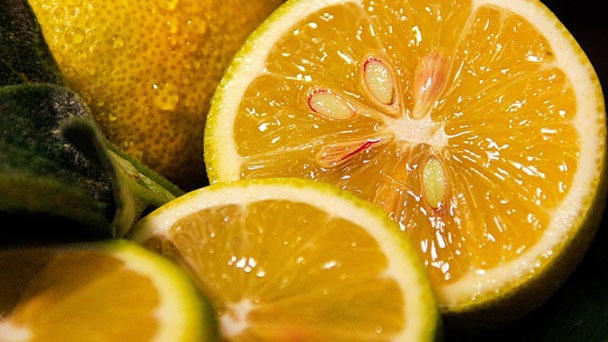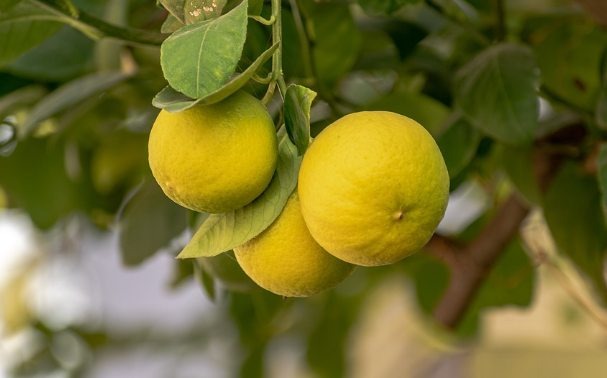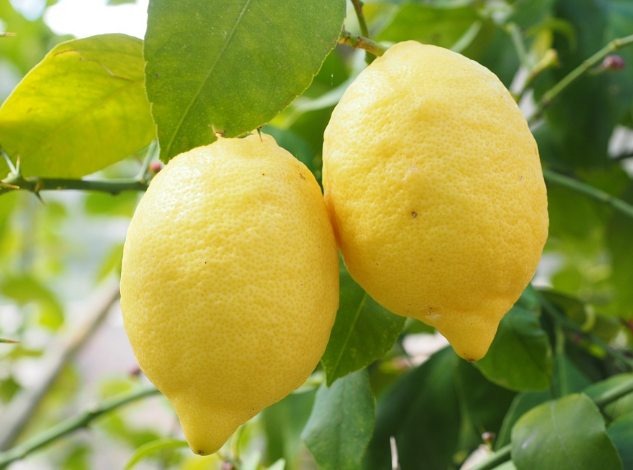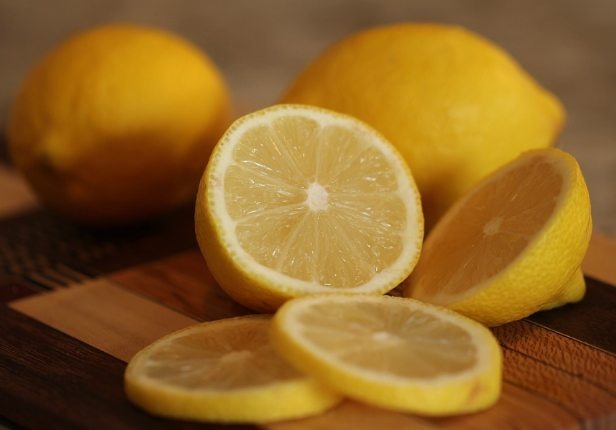When Is the Right Time to Pick Lemons - Is There A Lemon Season
Written by Ivy
Jan 05 2023

Lemon season begins when? Given the right conditions, lemons are one of the few fruits that can be harvested all year long. A lemon tree can have both blooms and ripe fruit at the same time if there is enough water. However, because lemons are primarily a winter fruit, they are mainly harvested in January. Lemons are a wonderful addition to both savory and sweet dishes and go amazingly with seafood. Fresh lemons from the tree are the best.
When Are Lemons in Season?
Lemons, like the majority of citrus fruits, are a winter fruit. Typically, springtime is when lemon trees bloom. Although the fruit can ripen at any time during the tree's four to twelve-month flowering period, summer is when the majority of fruit will grow. In the fall, the lemons will change from green to yellow, and they will be ready for harvesting in the winter.
Since California and Arizona have the ideal climates for growing lemons, these two states are where most lemons are grown.
Lemons have the unique property of being able to be harvested all year long. Therefore, if the lemon trees are not subjected to extremely cold temperatures or periods of drought, they will bloom and bear fruit all year long.

There are four common lemon varieties.
- The Eureka Lemon
- The Lisbon Lemon
- The Meyer Lemon
- The Bearss Lemon
Lisbon lemons are the one of these varieties most likely to produce fruit all year long. The newest variety of these lemons is the Meyer lemon, which is actually a hybrid of a lemon and an orange.
To prevent lemon trees from bearing fruit all year and to ensure a more predictable harvest season, commercial farmers will probably institute a dry season. It is possible to harvest lemons all year long, though, if you give your lemon tree enough water and shield it from freezing.
How Do You Tell If Lemons Are Ripe?
A ripe lemon is simple to identify. It can be harvested as soon as it turns a bright yellow color. After being picked, lemons do, however, continue to ripen. So you can pick lemons that are just a little bit underripe and let them ripen inside. Until they turn yellow, you can simply leave them on a counter. If you live somewhere that gets frost, you should do this.
It's interesting to note that green lemons can also be harvested. No matter how ripe they are, they can be harvested as soon as they have a diameter of 2 inches. Green lemons will taste like lemons. Waiting until the lemons turn yellow is preferable if you plan to use the zest of the citrus fruits.
Once they are harvested, green lemons will keep getting riper. As a result, you could easily pick lemons while they are still green.
On the tree, lemons can ripen for a long time without starting to rot. This lengthens the time it takes to harvest lemons.
Can You Eat Unripe Lemons?
Unripe lemons can indeed be eaten. Lemons that have a diameter of 2 inches or more are safe to eat and won't hurt you. You can pick lemons off the tree when they are just a little bit green or light green.
However, ripe lemons taste better than unripe lemons. In contrast to ripe lemons, they typically have a bitter flavor and are less juicy. Lemons should not be picked while they are still dark green because at this point they are still too immature and won't ripen properly.
Green lemons should not be confused with limes. While underripe lemons do not taste like limes, limes are a completely different fruit even though they may look similar.
Lemons can be eaten when they are still green, but they are best when they have ripened, either on or off the tree.
How Do You Harvest Lemons?
Lemons are simple to harvest. Lemons are best when picked by hand and don't require scissors or cutters to be harvested. The lemon should easily come off the tree if you give it a small twist with your hand. To get the lemons off the tree, don't shake it. The lemon tree might suffer as a result.
You might need to use a ladder to harvest the lemons that are higher up your lemon tree, depending on its size. There are 50 to 1500 lemons that a lemon tree can produce annually. Pruning your lemon tree before spring will increase its yield. The lemon tree will produce more blossoms if you do this.
Lemons are prepared for use or storage once they have been harvested.
How to Store Lemons After Harvesting Them
Lemons will last for about a week if you leave them in a bowl on the counter. You can keep your lemons in the fridge to extend their shelf life. Lemons can keep for two to three weeks in the refrigerator. To help stop mold from growing on the lemons, store them in a zip-top bag in the refrigerator.
You can also freeze lemon juice and zest if you harvest more lemons than you can consume before they spoil. Unluckily, a whole lemon cannot be frozen.
You could rinse the lemon instead, then take the zest off. On a baking sheet, the zest can be spread out and frozen for an hour. The zest can then be frozen after being sealed in an airtight bag. In the freezer, lemon zest can be stored for about three months.
Lemons can also be juiced, then the juice is frozen, either in jars or as ice cubes. Fresh lemon juice has a much better flavor than lemon juice from a store. You can have a year's worth of fresh lemon juice by freezing the juice from your lemons. Three months of frozen lemon juice are possible.
Numerous recipes call for lemons, lemon juice, and lemon zest. Lemons are a wonderful addition to any dish, whether you prefer savory or sweet food.

How Can You Use Lemon Zest and Lemon Juice?
Many recipes call for lemon juice. For instance, it can create a mouthwatering lemon meringue pie. Lemon juice can also be added to water or salad dressing.
Chicken and seafood dishes benefit greatly from the addition of lemon zest. Anything to which it is added gains a taste that is slightly bitter and sour. You can use lemon zest in a variety of dishes because a little bit goes a long way.
Lemon Harvesting FAQ
Have a query about lemon harvesting? Well, we know the answer.
1. How Should You Pick Lemons?
The lemon should be grasped firmly in your hand and gently twisted until it is released from the tree. To avoid damaging the lemon and the tree, avoid pulling the fruit in. If you are unable to twist the lemons off, you may cut them free using a clean, sharp pair of pruning shears.
2. How to Tell When Lemons Are Ripe?
When lemons ripen, it can be a little difficult to tell. Lemons ripen differently than other fruits; we judge them by their size rather than their color. When lemons grow to a diameter of 2 inches, they are considered ripe. They are still able to be picked even if they are completely yellow, fully green, or even green with yellow undertones.
After being picked, lemons will continue to ripen and turn yellow.
3. How to Handle Lemons After Picking Them
How should lemons be handled after being picked now that you know when to pick them?
The lemons should not be squeezed or dropped as this will cause bruising. When you're ready to go home, put your lemons in a box or bag and keep them in the shade.
When you get home, put your lemons on a rack in the refrigerator. For up to a week, this will keep them ripe and fresh.
4. Are All Lemons Seasonal?
What kind of lemons you are harvesting will determine everything. Lemons from Eureka can be picked at any time of year. Ripe and unripe fruit can grow on the same Eureka lemon tree, which is known for producing fruit sporadically. In other words, you can pick them at any time of year. Even a lemon tree in a pot has different harvest times.
Meyer lemons, on the other hand, produce fruit from March through November. The fruit is at its ripest during the winter, when they have their best harvest. Lemons that are ripe can remain on the vine for months without going bad. Lemon trees can now be harvested for a longer period of time than other fruit trees.

Conclusion: When is the Right Time to Pick Lemons?
Although the fruit of most lemon trees can be harvested at any time of year, winter is the most popular time. Its size, not color, can be used to determine whether a lemon is ripe. Lemons can range in color from green to yellow when ripe and are considered to be ripe when they reach a diameter of 2 inches.
After harvest, handle your lemons gently. This fruit is very susceptible to damage. Lemons can be kept in the freezer for months and the refrigerator for up to a week.
Latest Updated
- Benefits of Bugleweed - 7 Science-backed Health Benefits
- Bugleweed Dangers & Side Effects - Is It Poisonous?
- How to Plant Evergreen Trees - What You Should Know
- When to Plant Evergreens - Grow Guide for Evergreen Trees
- 12 Wonderful Evergreen Shrubs for Your Garden
- 12 Popular Evergreen Plants with Pictures for Beginners
- When And How To Prune A Lilac Bush Like a Pro
- How to Grow & Care for Lilac Vine (Hardenbergia Violacea)
- Japanese Lilac Tree (Syringa Reticulata) Care & Propagation Guide
- Shumard Oak Pros and Cons - What to Know
Popular Articles
- Winter maintenance of Antirrhinum Majus
- How to Grow Terminalia Mantaly Tree
- How to Grow and Care for Crossostephium Chinense
- How to grow Antirrhinum Majus in spring
- Peristeria Elata (Dove Orchid) Profile: Info & Care Guide
- Underwatered Snake Plant (Sansevieria Trifasciata) - Signs And How To Fix
- How to Care for Brazilian Jasmine Plant (Mandevilla Sanderi)
- How to Grow & Care for Graptopetalum Purple Delight in Summer
- Rosa Chinensis (China Rose): Plant Growing & Care Tips
- How to Care for Baby Sun Rose (Aptenia Cordifolia)